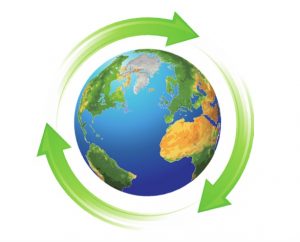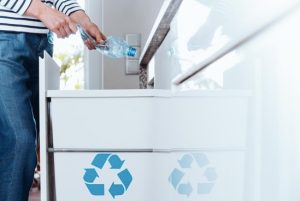Product packaging has made huge progress since the days when almost everything was shrink-wrapped or packed in styrofoam. Yet our planet’s waste problem has continued to grow. According to the Environmental Protection Agency’s numbers, containers and packaging created 77.9 million tons of municipal solid wastein 2015. Why is it proving so difficult to reduce our dependence on wasteful packaging?
A combination of factors increase the difficulty and make it hard for solutions to stick—but many people in many different industries are working to change that. What are the barriers that often prevent businesses from adopting sustainable packaging, and what strategies can they use to overcome them? Scientists, engineers and designers around the world are digging into these challenges right now. The strategies they’ve come up with are inspiring, surprising and possibly revolutionary for our planet’s fight for environmental sustainability.

#1: Research and Development Cost Barriers
Sustainable packaging can be costly and challenging to develop. Many businesses don’t see the resources they think they’d need on their balance sheet to invest in R&D for better packaging. However, it’s important to also look at the potential cost savings from streamlined packaging.
If your leadership is squeamish about making the investment, try pitching the projects in ROI terms. This might include focusing your first packaging redesign efforts on areas where eco-friendly packaging offers a high potential for cost savings. Eliminating packaging waste is the ultimate win-win: a cost-cutting point that’s also a great first step to becoming cleaner and greener.
#2: Passing Increased Material Costs Onto the Consumer
Consumers say they’re serious about protecting the environment and want to see businesses create greener packaging. But do they really care enough to shell out more for products with a green packaging upgrade? For years, the signs were mixed, and businesses were correspondingly wary. Research in 2011 found that most consumers were not willing to pay morefor sustainable products. However, newer numbers suggest a change. Nielsen went so far as to call 2018 “The Year of the Sustainable Shopper” as the sustainable goods market grew by an eye-popping 20 percent to reach $128.5 billion.
The entry of millennials into the workforce and their increased buying power have been driving forces behind this trend. Nielsen reports that 90 percent of millennials are willing to pay more for environmentally friendly ingredients (versus 60 percent of baby boomers.) What’s more, improvements in technology have created low-cost, high-impact solutions like biodegradable packing peanuts that actually offer superior performance to their styrofoam cousins.
The takeaway on this factor is that these concerns, while still worth considering, are generally less pressing than they were a decade ago. Between improved technology and a customer base that’s more willing to pay for sustainably produced goods, the risks are considerably lower.
#3: Blended and Multilayer Packaging that isn’t Recyclable.
Many companies rely on multilayer packaging that isn’t easily separated for recycling. An average chip bag, for example, contains several layers of material, some of which are recyclable and some of which aren’t. This means that municipal single-stream recycling systems often consider these bags as non-recyclable contaminants.
Hain Celestial, the manufacturer of the popular snack brands Garden of Eatin’ and Sensible Portions, devised an innovative solution. They’ve paired up with third-party recycling solutions company TerraCycle to create a free bag recycling program for their snack bags. That plastic then ends up with companies like 3D Brooklyn, a business that recycles the plastic from old chip bags to create 3D printing supplies. Sustainability has always been a team sport, so one of the smartest things that a business can do is to reach out to others invested in the same process.
#4: Food Scraps that Make Packaging Non-Recyclable
Anyone who’s gotten in trouble for throwing a pizza box in the recycling bin knows the so-called “Pizza Box Problem” very well. At first glance, a cardboard pizza box seems like it should be easy to recycle, but the grease and cheese that stick to the box often make that impossible. The food waste is considered a contaminant, and improperly recycled pizza boxes are a major headache for recyclers.
This slippery problem has defeated many businesses, and the vast majority of pizza boxes still end up in the trash. But there’s innovation on the horizon: last year, Seattle pizza restaurant World Pizza introduced a reusable pizza box. Regulars can buy the recyclable polypropylene box for $5 and get a free slice—then, they can bring it by to pick up their pizza any time they order takeout. It’s a limited and imperfect solution, but also the kind of bold first step required for an industry to discover the technologies of the future.
#5: The Need for Extra Protection and Durability in Online Retail
At the end of the day, performance is still king. No matter how green or sustainable a packaging method is, it won’t pass muster if it doesn’t fulfill its prime directive of protecting the product within. As online retail continues to put up huge growth numbers, the problem has become more severe due to the amount of packaging required to ship an item hundreds or thousands of miles. Online retailers know all too well that their products are likely to get some rough handling before they reach their destination, and they design their packaging accordingly.

Fortunately, commercially available eco-packaging solutions are getting better every day. Packaging options like biodegradable air pillows and recyclable refrigerant gel packs are now widely available, and they offer comparable performance at competitive prices. Online retailers and shippers now owe it to their customers and to their environment to thoroughly investigate all of their options for more eco-friendly shipping.
With the Earth’s plastic pollution rapidly reaching critical levels, there’s no time to waste in developing the packaging solutions to address it. As many businesses have discovered, the process is often not easy or cheap. New technology and fresh investment are necessary—but the good news is that both of those are on display every day.
